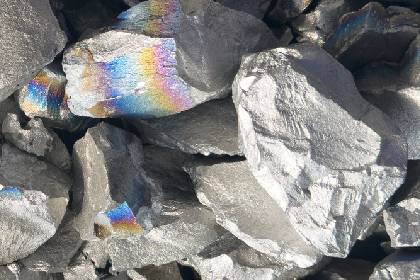The European Commission has announced that it has imposed definitive safeguard measures on imports of certain ferroalloys (namely, ferromanganese, ferrosilicon, ferrosilicomanganese and ferrosilicomagnesium), marking a significant step to protect an EU industry that employs roughly 1,800 workers. The decision concludes an 11-month investigation, which found that surging imports had seriously injured the bloc’s ferroalloy producers.

TRQs designed to balance protection and supply security
The safeguard introduces country-specific tariff-rate quotas (TRQs) for each ferroalloy type, limiting duty-free import volumes. According to the Commission’s design:
- imports within the quota enter the EU duty-free,
- imports above the quota may still enter duty-free if their price is above a set threshold,
- if the price is below the threshold, an additional duty equal to the difference will apply.
The measures apply to all third countries, including Norway and Iceland, which had always been excluded from measures relating to steel imports. Brussels will hold trimonthly consultations with both countries and monitor supply-chain effects to ensure the wider European metals value chain is not disrupted.
The tariff-rate quota volumes have been calculated as 75 percent of the average import level for 2022-2024 for each country.
Safeguard responds to rising imports and global overcapacity
The investigation, launched in December 2024, confirmed that ferroalloy imports rose 17 percent between 2019 and 2024, while EU producers’ market share fell sharply from 38 percent to 24 percent.
The European Commission found that global overcapacity, import restrictions in other major markets, and rising tariffs worldwide had diverted significant volumes toward the EU, causing serious injury to domestic producers. By stabilizing upstream supply, the safeguard aims to reinforce the resilience of the European steel value chain.
Three-year duration, WTO consistency maintained
The measures will remain in force for three years, expiring on November 17, 2028. The Commission emphasized that the safeguard is fully compatible with EU bilateral and regional trade commitments, ensuring compliant application across all partners.
The quota volumes allocated by country can be seen at the table below.
Product type |
HS and CN codes |
Allocation by country |
Year 1 |
|||
From 18.11.2025 to 17.2.2026 |
From 18.2.2026 to 17.5.2026 |
From 18.5.2026 to 17.8.2026 |
From 18.8.2026 to 17.11.2026 |
|||
Volume of tariff quota (mt) |
||||||
Ferro-Manganese |
7202 11, 7202 19 |
Norway |
28,972 |
28,027 |
28,972 |
28,972 |
India |
17,625 |
17,051 |
17,625 |
17,625 |
||
South Africa |
8,272 |
8,003 |
8,272 |
8,272 |
||
Malaysia |
6,765 |
6,545 |
6,765 |
6,765 |
||
Korea, Republic of |
4,832 |
4,675 |
4,832 |
4,832 |
||
Other countries |
5,557 |
5,376 |
5,557 |
5,557 |
||
Ferro-Silicon |
7202 21, 7202 29 |
Norway |
35,136 |
33,990 |
35,136 |
35,136 |
Iceland |
13,373 |
12,937 |
13,373 |
13,373 |
||
Kazakhstan |
8,090 |
7,826 |
8,090 |
8,090 |
||
Brazil |
6,316 |
6,110 |
6,316 |
6,316 |
||
Other countries |
24,984 |
24,169 |
24,984 |
24,984 |
||
Ferro-Silico-Magnesium |
7202 99 30 |
China |
468 |
453,61 |
468 |
468 |
Brazil |
99 |
96,55 |
99 |
99 |
||
India |
78 |
76,33 |
78 |
78 |
||
Thailand |
76 |
74,32 |
76 |
76 |
||
Other countries |
18 |
18,28 |
18 |
18 |
||
Ferro-Silico-Manganese |
7202 30 |
Norway |
37,067 |
35,858 |
37,067 |
37,067 |
India |
31,958 |
30,916 |
31,958 |
31,958 |
||
Zambia |
7,882 |
7,625 |
7,882 |
7,882 |
||
Other countries |
18,955 |
18,337 |
18,955 |
18,955 |
||